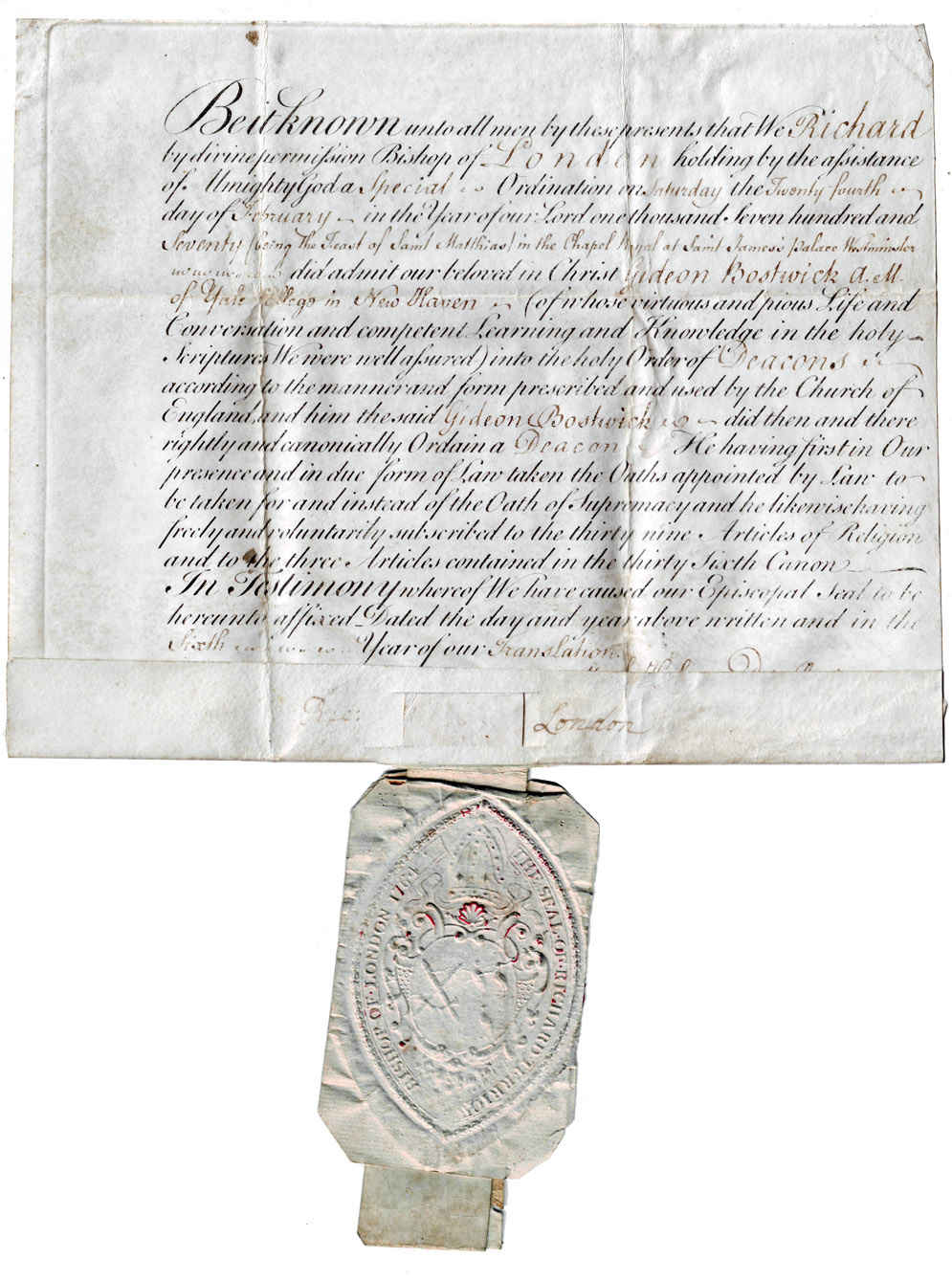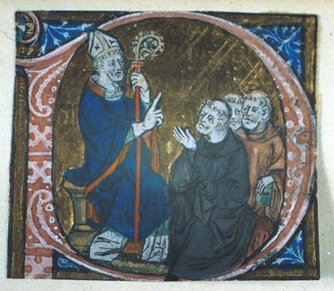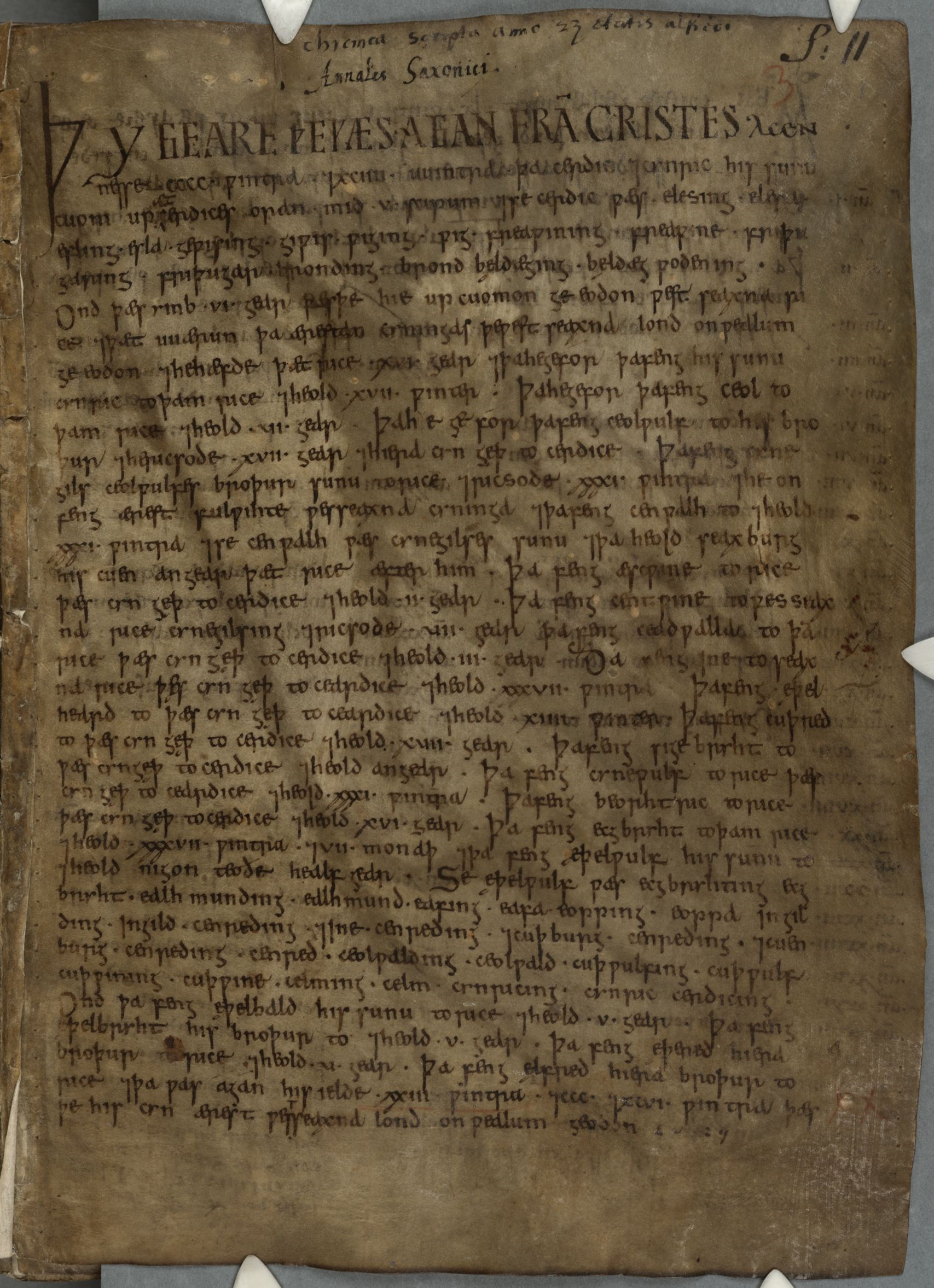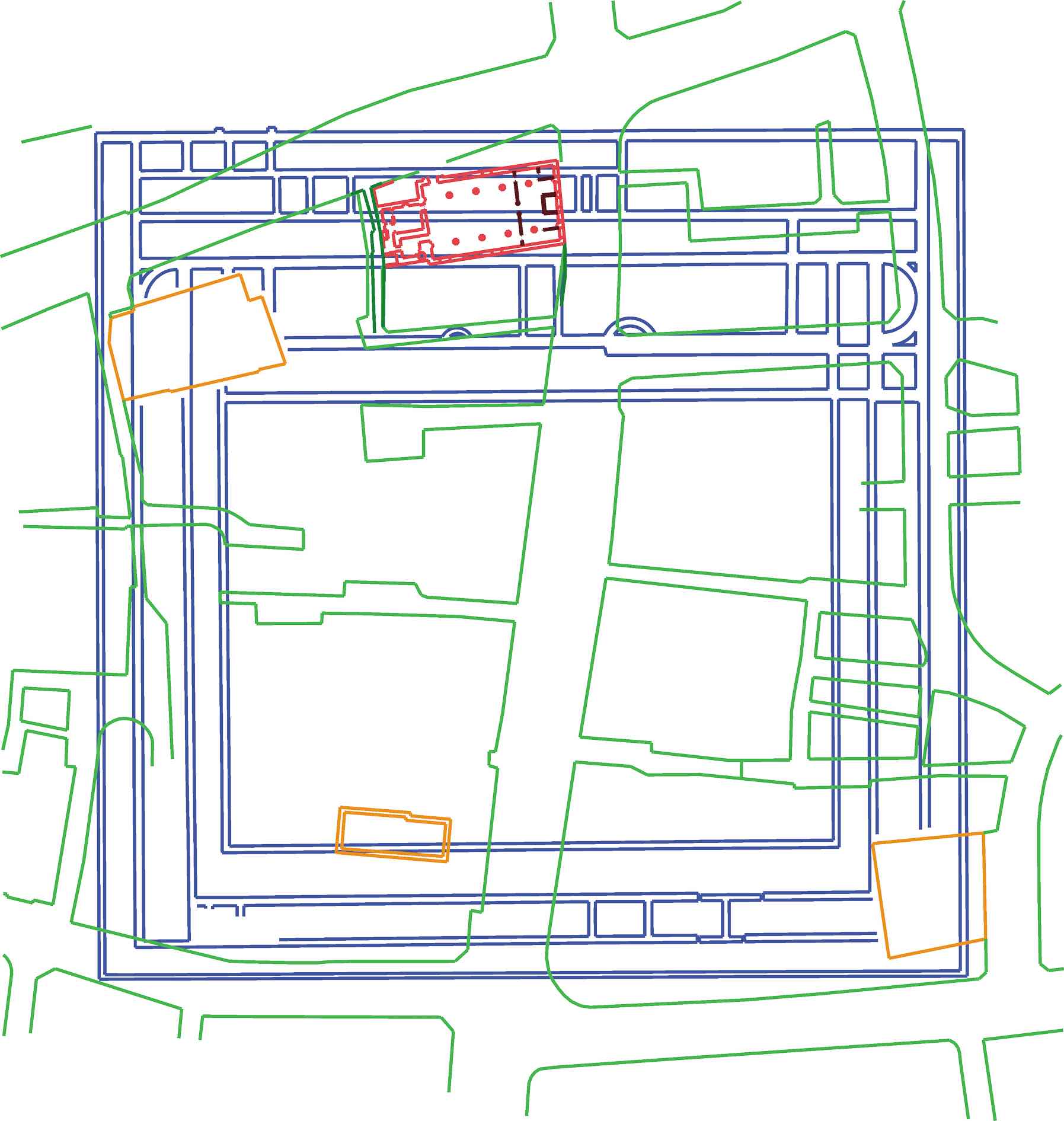|
Waldhere (bishop)
__NOTOC__ Waldhere (or Wealdheri; died between 705 and 716) was an early medieval Bishop of London, England. Waldhere was consecrated in 693. He died between 705 and 716.Fryde, et al. ''Handbook of British Chronology'' p. 219 A letter of his, written about 704 to Archbishop Bertwald of Canterbury still survives, and discusses the tension between King Ine of Wessex and the joint kings of Essex, Sigeheard and Swaefred.Kirby ''Earliest English Kings'' p. 106 The letter has been described by Sir Frank Stenton Sir Frank Merry Stenton FBA (17 May 1880 – 15 September 1967) was an English historian of Anglo-Saxon England, a professor of history at the University of Reading (1926–1946), president of the Royal Historical Society (1937–1945), Readi ... as 'the first letter known to have been written from one English-man to another'.Stenton ''Anglo-Saxon England'' p. 142 Citations References * * * External links * Bishops of London 8th-century death ... [...More Info...] [...Related Items...] OR: [Wikipedia] [Google] [Baidu] |
Bishop Of London
The bishop of London is the Ordinary (church officer), ordinary of the Church of England's Diocese of London in the Province of Canterbury. By custom the Bishop is also Dean of the Chapel Royal since 1723. The diocese covers of 17 boroughs of Greater London north of the Thames, River Thames (historically the City of London and the County of Middlesex) and a small part of the County of Surrey (the district of Borough of Spelthorne, Spelthorne, historically part of Middlesex). The Episcopal see, see is in the City of London, where the seat is St Paul's Cathedral, which was founded as a cathedral in 604 and was rebuilt from 1675 following the Great Fire of London (1666). Third in seniority in the Church of England after the archbishops of Archbishop of Canterbury, Canterbury and Archbishop of York, York, the bishop is one of five senior bishops who sit as of right as one of the 26 Lords Spiritual in the House of Lords (for the remaining diocesan bishops of lesser rank, seats are ... [...More Info...] [...Related Items...] OR: [Wikipedia] [Google] [Baidu] |
Erkenwald
Saint Earconwald or Erkenwald (died 693) was a Saxon prince and Bishop of London between 675 and 693. He is the eponymous subject of one of the most important poems in the foundations of English literature (thought to be by the Sir Gawain and the Green Knight Pearl Poet). He was called ''Lundoniae maximum sanctus'', 'the most holy figure of London', and ''Lux Londonie'', "the light of London". Peter Ackroyd has said of him, "we may still name him as the patron saint of London, is.. cult survived for over eight hundred years, before entering the temporary darkness of the last four centuries". He is associated with a very early Anglo-Saxon phase of building at St Paul's Cathedral, and William Dugdale says he began the building. In recent times he has been portrayed in novels and films, for example in the work of Bernard Cornwell. The early diocese of London was coterminous with the Kingdom of Essex, making the Bishop of London the Bishop of the East Saxons. Life Origins Earcon ... [...More Info...] [...Related Items...] OR: [Wikipedia] [Google] [Baidu] |
Ingwald
__NOTOC__ Ingwald (or Ingweald; died 745) was a medieval Bishop of London The bishop of London is the Ordinary (church officer), ordinary of the Church of England's Diocese of London in the Province of Canterbury. By custom the Bishop is also Dean of the Chapel Royal since 1723. The diocese covers of 17 boroughs o ... in England. Ingwald was consecrated between 705 and 716. He died in 745.Fryde, et al. ''Handbook of British Chronology'' p. 220 Citations References * External links * Bishops of London 745 deaths Year of birth unknown 8th-century English bishops {{England-bishop-stub ... [...More Info...] [...Related Items...] OR: [Wikipedia] [Google] [Baidu] |
Early Middle Ages
The Early Middle Ages (or early medieval period), sometimes controversially referred to as the Dark Ages (historiography), Dark Ages, is typically regarded by historians as lasting from the late 5th to the 10th century. They marked the start of the Middle Ages of History of Europe, European history, following the decline of the Roman Empire, decline of the Western Roman Empire, and preceding the High Middle Ages ( 11th to 14th centuries). The alternative term ''Late antiquity#Terminology, late antiquity'', for the early part of the period, emphasizes elements of continuity with the Roman Empire, while ''Early Middle Ages'' is used to emphasize developments characteristic of the earlier medieval period. The period saw a continuation of trends evident since late classical antiquity, including population decline, especially in urban centres, a decline of trade, Medieval Warm Period, a small rise in average temperatures in the North Atlantic region and Migration Period, increased m ... [...More Info...] [...Related Items...] OR: [Wikipedia] [Google] [Baidu] |
Bertwald
Berhtwald (died 731) was the ninth Archbishop of Canterbury in England. His predecessor had been Theodore of Tarsus. Berhtwald begins the first continuous series of native-born Archbishops of Canterbury, although there had been previous Anglo-Saxon archbishops, they did not succeed each other until Berhtwald's successor Tatwine. Berhtwald's period as archbishop coincided with the end of Wilfrid's long struggle to regain the Bishopric of York, and the two-year delay between Theodore's death in 690 and Berhtwald's election may have been due to efforts to select Wilfrid for Canterbury. After his election, Berhtwald went to Gaul for consecration and then presided over two councils that attempted to settle the Wilfrid issue, finally succeeding at the second council in 705. Berhtwald also was the recipient of the first surviving letter close in Western Europe. Early life Little is known of Berhtwald's ancestry or his early life, but he was born around the middle of the seven ... [...More Info...] [...Related Items...] OR: [Wikipedia] [Google] [Baidu] |
Ine Of Wessex
Ine or Ini (died in or after 726) was King of Wessex from 689 to 726. At Ine's accession, his kingdom dominated much of what is now southern England. However, he was unable to retain the territorial gains of his predecessor, Cædwalla of Wessex, who had expanded West Saxon territory substantially. By the end of Ine's reign, the kingdoms of Kent, Sussex, and Essex were no longer under West Saxon sway; however, Ine maintained control of what is now Hampshire, and consolidated and extended Wessex's territory in the western peninsula. Ine is noted for his code of laws (''Ines asetnessa'' or "laws of Ine"), which he issued in about 694. These laws were the first issued by an Anglo-Saxon king outside Kent. They shed much light on the history of Anglo-Saxon society, and reveal Ine's Christian convictions. Trade increased significantly during Ine's reign, with the town of Hamwic (now Southampton) becoming prominent. It was probably during Ine's reign that the West Saxons began to mint ... [...More Info...] [...Related Items...] OR: [Wikipedia] [Google] [Baidu] |
Sigeheard Of Essex
Sigeheard was joint king of Essex along with his brother, Swaefred, from 694 to 709, succeeding their father Sæbbi. In 705, they became estranged from King Ine of Wessex for sheltering his rivals to the throne. At the Synod of Brentford, they agreed to banish the rivals from Essex in return for King Ine promising not to attack Essex. The exact chronology of the later years of their rule are uncertain. It is not known whether they governed together until 709 or if Swaefred died before then. Sigeheard along with Cenred of Mercia confirmed the purchase of Fulham from Tyrhtel (Thyrtell), Bishop of Hereford by Waldhere (Waldherus), Bishop of LondonFrank Stenton, ''Anglo-Saxon England'' (OUP, Third Edition, reissued 2001) (charter A charter is the grant of authority or rights, stating that the granter formally recognizes the prerogative of the recipient to exercise the rights specified. It is implicit that the granter retains superiority (or sovereignty), and that the ... ... [...More Info...] [...Related Items...] OR: [Wikipedia] [Google] [Baidu] |
Frank Stenton
Sir Frank Merry Stenton FBA (17 May 1880 – 15 September 1967) was an English historian of Anglo-Saxon England, a professor of history at the University of Reading (1926–1946), president of the Royal Historical Society (1937–1945), Reading University's vice-chancellor (1946–1950). Life The son of Henry Stenton of Southwell, Nottinghamshire, he was educated at Keble College, Oxford, and was elected an Honorary Fellow in 1947. With Allen Mawer, Stenton wrote the second English Place-Name Society volume, ''The Place-Names of Buckinghamshire'', published in 1925. He delivered the Ford Lectures at Oxford University in 1929. He went on to write ''Anglo-Saxon England'', a volume of the Oxford History of England, first published in 1943 and described by Simon Keynes as "magisterial and massively authoritative". In the view of Nicholas Higham writing in 1992 it "remains the most complete study of Anglo-Saxon history that has ever appeared. He was himself a historian of ... [...More Info...] [...Related Items...] OR: [Wikipedia] [Google] [Baidu] |
Christianity
Christianity is an Abrahamic monotheistic religion, which states that Jesus in Christianity, Jesus is the Son of God (Christianity), Son of God and Resurrection of Jesus, rose from the dead after his Crucifixion of Jesus, crucifixion, whose coming as the Messiah#Christianity, messiah (Christ (title), Christ) was Old Testament messianic prophecies quoted in the New Testament, prophesied in the Old Testament and chronicled in the New Testament. It is the Major religious groups, world's largest and most widespread religion with over 2.3 billion followers, comprising around 28.8% of the world population. Its adherents, known as Christians, are estimated to make up a majority of the population in Christianity by country, 157 countries and territories. Christianity remains Christian culture, culturally diverse in its Western Christianity, Western and Eastern Christianity, Eastern branches, and doctrinally diverse concerning Justification (theology), justification and the natur ... [...More Info...] [...Related Items...] OR: [Wikipedia] [Google] [Baidu] |
Bishops Of London
The bishop of London is the ordinary of the Church of England's Diocese of London in the Province of Canterbury. By custom the Bishop is also Dean of the Chapel Royal since 1723. The diocese covers of 17 boroughs of Greater London north of the River Thames (historically the City of London and the County of Middlesex) and a small part of the County of Surrey (the district of Spelthorne, historically part of Middlesex). The see is in the City of London, where the seat is St Paul's Cathedral, which was founded as a cathedral in 604 and was rebuilt from 1675 following the Great Fire of London (1666). Third in seniority in the Church of England after the archbishops of Canterbury and York, the bishop is one of five senior bishops who sit as of right as one of the 26 Lords Spiritual in the House of Lords (for the remaining diocesan bishops of lesser rank, seats are attained upon vacancy, determined by chronological seniority). The other four senior bishops are the archbishop of ... [...More Info...] [...Related Items...] OR: [Wikipedia] [Google] [Baidu] |
8th-century Deaths
The 8th century is the period from 701 (represented by the Roman numerals DCCI) through 800 (DCCC) in accordance with the Julian Calendar. In the historiography of Europe the phrase the long 8th century is sometimes used to refer to the period of circa AD 660–820. The coast of North Africa and the Iberian Peninsula quickly came under Islamic Arab domination. The westward expansion of the Umayyad Empire was famously halted at the siege of Constantinople by the Byzantine Empire and the Battle of Tours by the Franks. The tide of Arab conquest came to an end in the middle of the 8th century.Roberts, J., ''History of the World (book), History of the World'', Penguin, 1994. In Europe, late in the century, the Vikings, seafaring peoples from Scandinavia, begin raiding the coasts of Europe and the Mediterranean, and go on to found several important Monarchy, kingdoms. In Asia, the Pala Empire is founded in Bengal. The Tang dynasty reaches its pinnacle under China, Chinese Empe ... [...More Info...] [...Related Items...] OR: [Wikipedia] [Google] [Baidu] |






